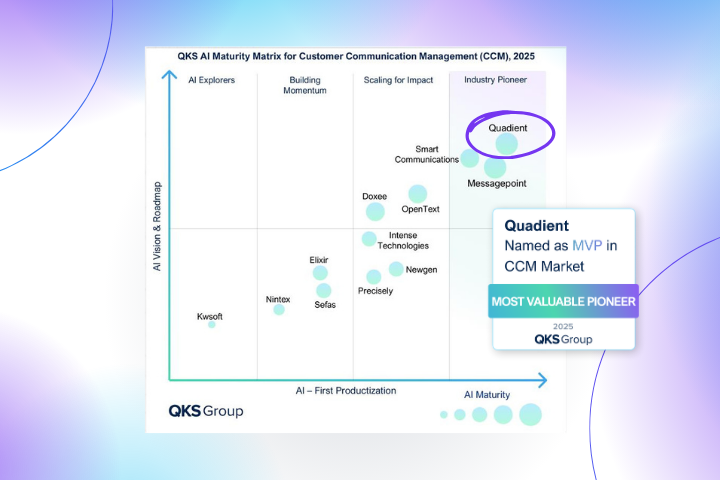
To fully understand the AP landscape throughout the rest of 2023, we need to first understand four important trends with staying power that emerged in 2022.
1. Economic Uncertainty
It’s the phrase on everyone’s lips: economic uncertainty. And it certainly hasn’t abated.
Economic headwinds continue to impact business operations across most industries. Near-record inflation, rising interest rates, labor shortages in a number of industries and downsizing in others are key indicators of incoming hardship.
As a result, businesses are dealing with higher costs, tighter budgets and increased pressures on wages, sales and revenue.
And accounts payable departments aren’t immune to the pressure.
While much of the previous year was filled with debate over the likelihood of a recession, little was offered on how to tackle a recession if it did hit.
There are tried-and-true — and even a few novel — strategies to support your business through a recession.
Regardless of where you fell on the recession debate over the last year, leaning on AI technology could be the key to surviving the impending downturn and thriving on the other side of it.
2. AP Data Visibility
In conversation with Quadient Accounts Payable Automation by Beanworks' clients, a common thread emerges: businesses are increasing their focus on AP data.
Visibility into AP data isn’t just a nice-to-have, it's a real source of strategic value for businesses.
Challenging economic circumstances have made managing and controlling cash flow an organizational priority. As a result, AP has grown to become an increasingly important function of finance teams.
AP done well should provide timely, accurate intelligence for cash management. When and how invoices are paid has a major impact on how organizations manage their cash flow and vendor relationships.
Experian’s global data management research study found that 55% of business leaders don’t fully trust their data sets, an alarming statistic when we think about the essential role data plays in decision making.
Economic pressures and business challenges combine to make real-time visibility into AP data even more important. Agility is mission critical for all businesses, especially during a recession. All decision-making and any potential pivots must be based on an accurate picture of cash coming in and going out.
3. Flexible Work Environments
Remote working arrangements were obviously one of the defining work trends of 2021. And while 2022 saw more workers returning to the office, flexible work environments have held strong.
It’s steadily becoming more evident that flexible and remote work options now remain a priority for workers as well as the companies competing for their talent. What this means is that leading companies are building in remote and hybrid work options as a standard practice.
McKinsey found that 58% of employed workers have the option to work remotely or on a hybrid model. Additionally, even more employed workers would take advantage of the option if it was available to them.
This new workforce landscape directly impacts AP and has an especially severe impact on teams that rely on traditional paper-heavy processes and manual approvals.
Chasing paper around the office is time-consuming and frustrating. Multiply that frustration by the challenge of managing the same process with workers coming into and leaving the office at different times and you’ve got an uphill climb.
A Quadient AP client who automated AP before 2022 said they felt like they prepared for the pandemic without realizing it. With the abrupt change from physical, in-person to remote working environments, the transition was easier than expected because most of the crucial processes had already moved online. The same company has recently transitioned to a fully remote model, closing their former office building permanently.
Companies that didn’t manage their processes strategically and proactively — instead seeking to weather the storm — are now struggling. Flexible work is one trend that’s here to stay.
4. Automation
Small and medium businesses (SMBs) are embracing automation in a bid to future-proof operations from the negative effects of pandemics and recessions alike.
Expansion during economic uncertainty is tough. Stress is high, resources are maxed out and teams are stretched thin. All the while, business leaders need accurate information in real time. And yet, many SMBs are faced with manual AP processes which add even more pressure to already bogged down teams.
Accounts Payable automation is not just more convenient — it’s a strategic game changer. Modern, flexible workforces need processes in place that support the new normal.
While large enterprises are typically the ones pioneering automation adoption and back office digital transformation, opportunities have emerged in recent years that allow SMBs to do the same. Today SMBs are leveraging these same tools and processes for their own transformations. In fact, 70% of SMBs have seen an increase in productivity with automation.
Reshaping AP With Automation
2022 saw key trends take form that are already shaping 2023.
Understanding these trends means businesses can position themselves to look forward to tackling 2023, rather than worrying about it.
Dealing with economic uncertainty means focusing on maximum visibility into AP data, navigating the opportunities (rather than just the cost) that flexible work arrangements offer and utilizing top automation tools to re-envision what AP can do for you.









